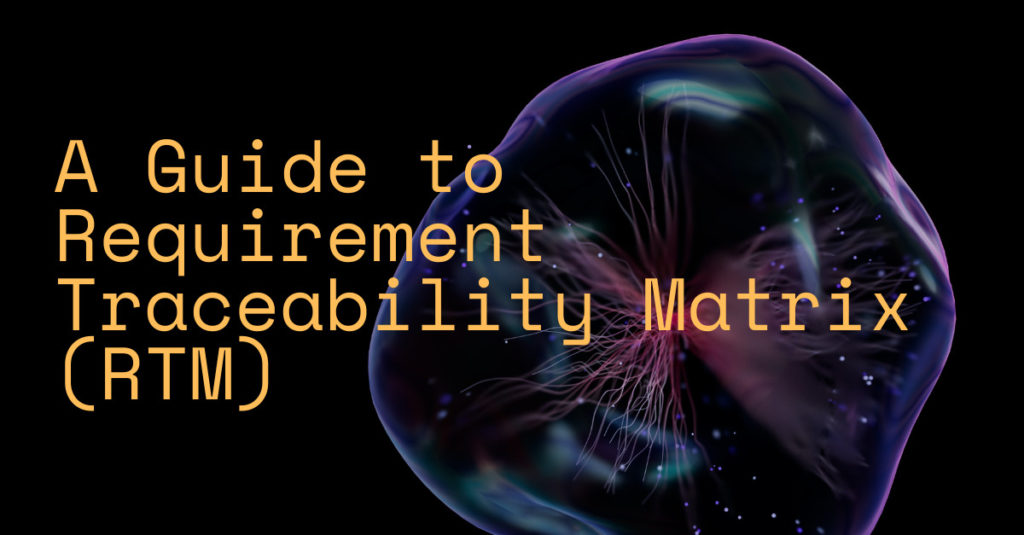
The traceability of requirements is an essential feature of engineering projects, particularly in hardware engineering.
It entails tracking a project’s requirements from the beginning to the finish of the development process. This assists in keeping the project on schedule and meeting the needs of all stakeholders, from the development team to the end users.
Requirements Traceability is critical for successful project management and overview throughout the product development lifecycle. It ensures that the project is connected with the organization’s aims and objectives and that the finished result fits the customers’ needs.
A project is in danger of product defects, delays, and cost overruns if requirements are not traceable.
The Difficulties of Requirements Traceability
One of the most challenging difficulties of requirements traceability is maintaining consistency and correctness of requirements. As a project advances, requirements may alter or evolve, making it difficult to track its present condition.
When a project’s complexity expands, it might be challenging to ensure that all requirements are completed and that there are no gaps or inconsistencies.
Another area for improvement is managing the complexity of substantial technical projects. The number of requirements and individuals working on the projected increase as the project progresses. This can make keeping track of the criteria and ensuring everyone is on the same page challenging.
Maintaining alignment between requirements and project goals and objectives is another difficulty. As the project proceeds, the requirements can deviate from the original plans and objectives, resulting in a project aligned with the organization’s needs.
Do you struggle to write good requirements? Check out this handy guide to writing requirements for engineering projects.
Traditional methods for tracing requirements
- Document-based approach: A document-based approach is a traditional approach to requirements traceability. This entails developing a document, such as a requirements traceability matrix (RTM), that details the project’s requirements. This method can be time-consuming and error-prone because it requires manual updating and is challenging to keep track of.
- Spreadsheet-based technique: A spreadsheet-based approach is another typical way. This entails developing a spreadsheet outlining all of the project’s requirements. This method can also be time-consuming and error-prone because it requires manual updating and is challenging to keep track of.
Another conventional option is the use of a manual traceability matrix. The table displays the connection between requirements, test cases, and faults. This method can be time-consuming and error-prone because it requires manual updating and is challenging to keep track of.
Traditional approaches have drawbacks, such as:
- Lack of automation
- Difficulties keeping track of requirements
- A need for real-time changes.
This might result in requirement inconsistencies, project delays, and increased costs.
The advantages of using a software tool for requirement tracing
- Traceability process automation: A digital solution for requirements traceability can automate the traceability process, saving time and effort in keeping track of the requirements. This allows teams to concentrate on more critical duties like creating and testing.
- Real-time updates and collaboration: The right requirements management tool can also give real-time updates and collaboration, making it easier for teams to collaborate and stay on track. This might help to verify that the project is aligned with the organization’s initial aims and objectives.
- Improved visibility and traceability: Digital technologies can also help to identify possible difficulties early in the project and take corrective action. This can lessen the likelihood of failures, delays, and cost overruns.
Digital solutions can also give comprehensive reporting and analytics capabilities, allowing project managers to evaluate project progress better and identify areas for improvement.
Valispace and its Requirement Traceability Matrix
Valispace is a requirements management application created primarily for hardware engineering projects. It addresses requirements traceability difficulties through automation, real-time updates, and collaboration.
It enables teams to link requirements and the system model in real time, improving traceability and consistency.
Valispace also provides comprehensive reporting and analytics tools, which can assist project managers in better understanding project progress and identifying areas for improvement. Valispace also has a user-friendly interface that makes it simple for teams to navigate and use the product.
Valispace’s Unique Value
The real-time linkage of requirements and the system model is Valispace’s unique value. This capability enables teams to observe the impact of changes to requirements on the entire system model in real-time. This promotes traceability and consistency while ensuring that the project remains aligned with the organization’s goals and objectives.
This functionality has been used successfully in real-world projects. For example, in one project, a team utilized Valispace to connect requirements and the system model, allowing them to uncover a design flaw early on, saving them substantial time and money in the long run.
How to Determine Valispace’s Suitability for Your Project
To determine Valispace’s applicability for your project, you must first identify your project’s specific goals and requirements. Consider the following questions:
- What is the scale and complexity of your project?
- What are the goals and objectives of your project?
- What is your current process for managing requirements?
Once you’ve determined your project’s requirements, you can schedule a call with Valispace to discuss your project and evaluate the tool’s applicability.
The Valispace team can assist you in understanding the tool’s capabilities and how it may be adapted to meet the specific requirements of your project.
Benefits of Requirement Traceability with Valispace
Requirements traceability is an essential feature of engineering projects, especially in hardware engineering. It contributes to keeping the project on track and meeting the needs of all stakeholders, from the development team to the end users.
Traditional methods of requirements traceability can be time-consuming and error-prone, but employing a digital platform like Valispace can automate the process, enable real-time updates and collaboration, and improve visibility and traceability.
Valispace’s distinct selling point is its real-time requirement and system model connection, which increases traceability and consistency.
To determine the suitability of Valispace for your project, schedule a call with Valispace to discuss your project and evaluate the tool’s usefulness.

